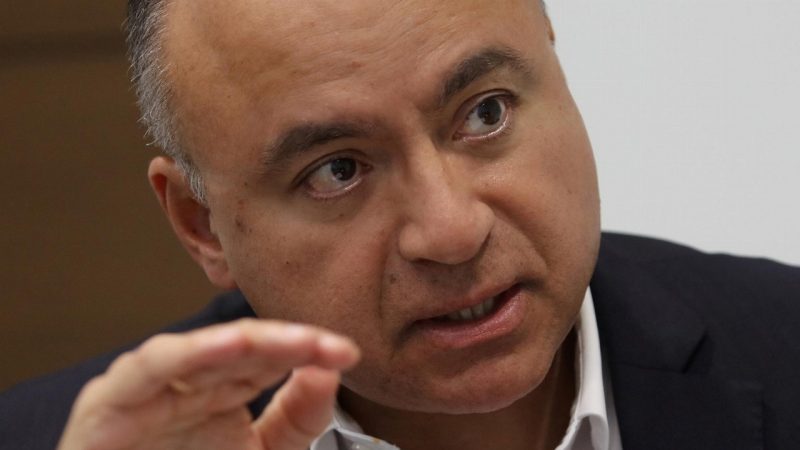- A rural community in Peru agrees to lift its blockade of the country’s largest copper mine after protests forced its owners to suspend operations
- Regional communities are frustrated at not seeing the benefits of the country’s copper-driven economic boom
- In a tweet, Peru’s Ministry of Energy and Mines said the protest would only be lifted on Wednesday when Antamina signs a formal agreement for discussions
- The blockade is the latest in a string of demonstrations against Peru’s miners, prompting industry bodies to decry a “spiral” of protests
- Peru’s currency weakened 43 per cent on Tuesday to just over four per US dollar, while one of Lima’s stock indexes dropped 0.36 per cent
A rural community in Peru has agreed to lift its blockade of the country’s largest copper mine after protests forced its owners to suspend operations.
The demonstration — part of a wave of movements against miners in Peru — sent jitters through the country’s markets on Tuesday, presenting a test for leftist President Pedro Castillo, who took office in July.
President Castillo sent officials to the Antamina mine on Tuesday to negotiate after protestors said they would not lift the blockade until formal discussions between all parties had taken place.
Located roughly 4200 feet above sea level in the Andes mountains, 270 kilometres north of Lima, Antamina is owned 33.75 per cent by BHP, 33.75 per cent by Glencore, 22.75 per cent by Teck Resources and 10 per cent by Mitsubishi.
Adan Damian, the leader of demonstrators from the rural Aquia community, said previously that Antamina was bringing them “no benefits,” but said the main grievance was that the mine had never fully paid Aquia for the lands it used — an allegation Antamina has disputed in the past.
In a tweet this morning, Peru’s Ministry of Energy and Mines said the protest would only be lifted on Wednesday when Antamina signs a formal agreement for discussions.
According to a copy of the agreement tweeted by the office of Peru’s prime minister, those negotiations will resume on Friday with a visit by Antamina CEO Victor Gobitz.
Peru, the world’s second-largest producer of copper, saw its currency and equities markets weaken on Tuesday, with many traders pointing to social unrest that has hit a number of mining companies in recent weeks.
The country’s mining sector has seen rapid development over the last few years. However, many rural communities — which voted overwhelmingly for President Castillo — say they are yet to see the benefits.
President Castillo came to power on the back of strong support for mining workers and pledged to redistribute mineral wealth to communities who have long complained they’ve been left behind in Peru’s copper-driven boom.
In October, a road leading to MMG’s Las Bambas copper mine was blocked by locals who said the company has not honoured its commitments. Further down the same road, another group of residents placed a roadblock to protest Hudbay Minerals’ Constancia mine.
Earlier this month, a protest at Glencore’s Antapaccay mine in southern Peru was lifted after the company and locals agreed to begin discussing a new deal.
Together with Antamina, these four mines account for more than 40 per cent of Peru’s copper production, which amounted to 2.15 million tonnes in 2020.
The spike in tensions led industry bodies to decry a “spiral” of protests, and prompted the industry-friendly central bank chief Julio Velarde to say the demonstrations were hitting the country’s traditionally strong image as an investment market.
“Obviously order needs to reestablished,” Mr Velarde said on Tuesday as he was sworn in for an additional five-year term.
Peru’s currency, the sol, weakened 43 per cent on Tuesday to just over four per US dollar, while one of Lima’s stock indexes dropped 0.36 per cent.

